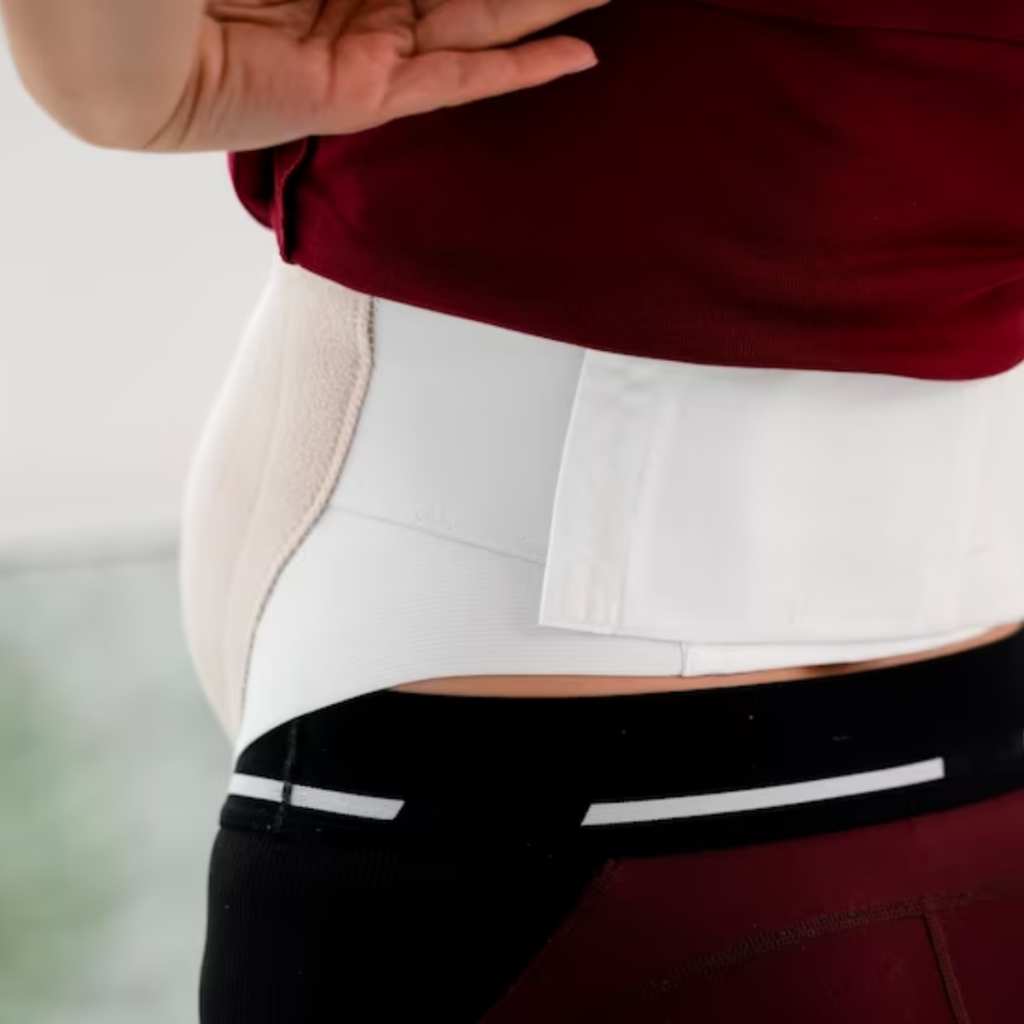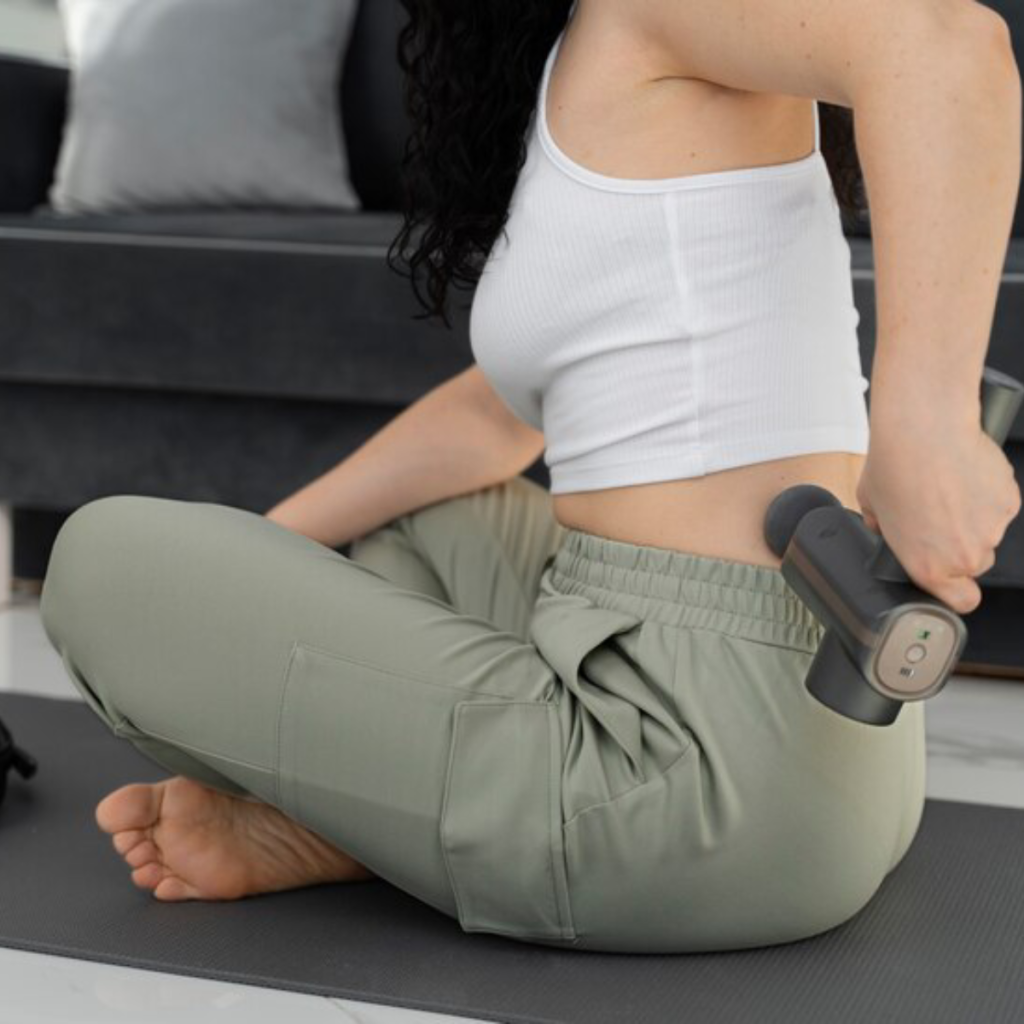Discover the potential benefits of using a support belt for abdominal recovery and diastasis recti.
Can a Support Belt Help with Abdominal Recovery and Diastasis Recti?
If you’re on a postpartum journey or have experienced abdominal separation, you might be wondering if a support belt can help with your recovery and diastasis recti. You’re not alone! Many new moms and individuals who have had abdominal surgeries are curious about the benefits of using a support belt. In this article, we’ll dive deep into the world of abdominal recovery and diastasis recti, exploring the anatomy of the abdominal wall, common causes and symptoms, and how a support belt can play a role in your recovery. Let’s get started!

Understanding Abdominal Recovery and Diastasis Recti
The Anatomy of the Abdominal Wall
Before we delve into diastasis recti, let’s take a moment to appreciate the intricate anatomy of the abdominal wall. Your abdominal muscles are more than just a “six-pack.” They consist of several layers, including the rectus abdominis, external obliques, internal obliques, and transverse abdominis.
These muscles work together to provide core stability and support to your torso. They allow you to bend, twist, and move with ease. The rectus abdominis, often referred to as the “six-pack” muscles, are responsible for flexing the spine and assisting in breathing. The external and internal obliques help with rotation and lateral flexion of the trunk, while the transverse abdominis acts as a deep stabilizer, providing support to the spine and organs.
Understanding the structure of your abdominal wall is crucial in comprehending how diastasis recti occurs and how a support belt can assist in recovery. By targeting these specific muscles, a support belt can help bring them back together and provide the necessary support for healing.
What is Diastasis Recti?
Diastasis recti, commonly known as abdominal separation, is a condition where the right and left halves of the rectus abdominis muscle separate. This separation occurs along the linea alba, which is the connective tissue running vertically down the middle of your abdomen.
During pregnancy, your expanding uterus puts pressure on the abdominal wall, causing the rectus abdominis to stretch and separate. This separation can persist postpartum, leaving a gap that affects both the appearance and functionality of your core. It’s important to note that diastasis recti is not exclusive to pregnancy and can also occur in individuals who have never been pregnant.
Diastasis recti can vary in severity, with some individuals experiencing a small separation that naturally closes over time, while others may have a larger gap that requires intervention and rehabilitation. It’s crucial to consult with a healthcare professional to determine the best course of action for your specific situation.
Common Causes and Symptoms
Diastasis recti can occur for various reasons besides pregnancy. It can also occur due to rapid weight gain or loss, improper exercise techniques, and weak abdominal muscles. In addition to these factors, genetics and hormonal changes can also contribute to the development of diastasis recti.
Some common symptoms of diastasis recti include a protruding belly, lower back pain, poor posture, and difficulty engaging your core. It’s important to note that not everyone with diastasis recti experiences symptoms, and the severity of symptoms can vary from person to person.
While it’s essential to consult a healthcare professional for a proper diagnosis, using a support belt can be a complementary approach to your recovery. A support belt can provide gentle compression and support to the abdominal muscles, helping to bring them back together and promote healing. It can also provide additional stability to the core, allowing for better posture and improved engagement of the abdominal muscles during daily activities and exercise.
However, it’s important to note that a support belt should be used in conjunction with targeted exercises and rehabilitation techniques recommended by a healthcare professional. These exercises are designed to strengthen the deep core muscles and promote proper alignment of the abdominal muscles, ultimately aiding in the recovery of diastasis recti.
The Role of a Support Belt in Abdominal Recovery
The Function of a Support Belt
A support belt is designed to provide stability and gentle compression to your abdominal region. It works by supporting the connective tissue and muscles around your midsection, reducing the strain on your weakened or separated abdominal muscles.
But what exactly does this mean for your recovery? Let’s dive deeper into the functions of a support belt.
First and foremost, a support belt offers targeted support. It wraps around your abdomen, bringing the separated muscles closer together and promoting proper alignment. This is crucial for healing, as it helps your muscles regain their strength and stability.
Additionally, the gentle compression provided by the support belt acts as a reminder to engage your core and maintain proper posture throughout the day. This is especially important during activities that may put strain on your midsection, such as lifting heavy objects or performing strenuous exercises.
By wearing a support belt, you are essentially giving your body a helping hand in its healing process. It provides the support and stability needed to alleviate discomfort and promote optimal recovery.
How a Support Belt Aids in Recovery
Using a support belt can be a game-changer during your abdominal recovery. Not only does it offer physical support, but it also boosts your confidence and peace of mind.
Imagine feeling more secure and supported while going about your daily activities! With a support belt, you can experience just that. It provides an extra layer of support to your postpartum or healing midsection, reducing discomfort and alleviating back pain.
But the benefits don’t stop there. A support belt also plays a crucial role in promoting better muscle memory and alignment. When you wear a support belt, your muscles are constantly reminded of their proper positioning, helping them regain their strength and functionality.
This is particularly beneficial during gentle exercise or physical therapy sessions. The support belt provides the stability needed to perform these activities effectively, reducing the risk of further injury or strain.
However, it’s important to note that a support belt should be seen as a tool to assist in your recovery journey. While it offers numerous benefits, it works best when combined with other therapeutic exercises and lifestyle adjustments.
Remember, your recovery is a holistic process, and a support belt is just one piece of the puzzle. By incorporating it into your routine, along with proper nutrition, rest, and targeted exercises, you can regain your strength and minimize the effects of diastasis recti.
So, embrace the support that a support belt provides and let it be a guiding force on your path to abdominal recovery!
The Science Behind Support Belts and Diastasis Recti
Diastasis recti, a condition characterized by the separation of the abdominal muscles, can be a challenging issue to deal with. However, support belts have emerged as a potential solution to help individuals with this condition. Let’s delve deeper into the mechanics of support belts and their effect on diastasis recti.
The Mechanics of Support Belts
Support belts are thoughtfully designed to cater to the unique needs of individuals with abdominal separation. They are typically adjustable and made from soft, breathable materials that conform to your body shape. This ensures maximum comfort while wearing the belt for extended periods.
One of the key features of support belts is their elasticity. This allows them to provide comfortable compression without restricting your movements. The gentle yet firm pressure exerted by the belt helps to support the weakened muscles and encourages them to come together. By providing this external support, the belt aids in the healing process of diastasis recti.
In addition to providing support, the snug fit of the belt also serves another purpose. It acts as a reminder to engage your core muscles and maintain proper posture. This is crucial for individuals with diastasis recti as it helps to alleviate strain on the abdominal muscles and promote optimal healing.

The Effect of Support Belts on Diastasis Recti
Research on the effectiveness of support belts for diastasis recti is still emerging. While many individuals report positive results, it’s crucial to discuss your specific medical condition with a healthcare professional who can guide you through your recovery process.
It’s important to remember that diastasis recti is a complex issue influenced by various factors such as muscle strength, lifestyle habits, and overall health. Therefore, using a support belt should be combined with exercises recommended by professionals to achieve the best results.
These exercises may include targeted movements to strengthen the abdominal muscles and improve core stability. They may also involve activities that promote overall body strength and flexibility. By combining the use of a support belt with these exercises, individuals with diastasis recti can enhance their recovery process and regain optimal abdominal function.
Furthermore, it’s worth noting that support belts are not a standalone solution for diastasis recti. They should be used as part of a comprehensive treatment plan that may include physical therapy, dietary modifications, and lifestyle adjustments. Consulting with a healthcare professional will help you develop a personalized approach to address your specific needs and goals.
In conclusion, support belts offer a promising tool for individuals with diastasis recti. Their thoughtful design, elasticity, and snug fit provide the necessary support and reminder for proper posture and core engagement. However, it’s important to approach their use in conjunction with professional guidance and a comprehensive treatment plan to achieve the best outcomes.
Choosing the Right Support Belt
Factors to Consider When Buying a Support Belt
When selecting a support belt, several factors come into play. Consider the level of support you require, the adjustability of the belt, and the materials used. Look for a belt that’s comfortable, breathable, and suits your lifestyle.
Don’t forget to consult with a healthcare provider or diastasis recti specialist to identify any specific features or considerations based on your condition. They can offer personalized guidance on selecting the right support belt for your needs.
Different Types of Support Belts
Support belts come in various forms, such as abdominal binders, postpartum wraps, and compression garments. Each type caters to different needs and preferences. Explore the options available and choose the one that suits your comfort and support requirements.
Keep in mind that everyone’s body is unique, and what works for one person may not work for another. Don’t be afraid to try different support belts to find the one that provides the best support and comfort for your abdominal recovery journey.
Proper Use of a Support Belt for Optimal Results
How to Wear a Support Belt Correctly
A support belt should be worn snugly around your abdomen, providing gentle compression without causing discomfort. Follow the instructions provided with your specific support belt to ensure you’re wearing it correctly.
Avoid wearing the belt too tightly, as this can impede circulation and cause discomfort. Remember, it’s essential to strike a balance between support and comfort. Listen to your body and make adjustments as needed.
When and How Long to Use a Support Belt
The duration and frequency of support belt usage can vary depending on your individual needs and recovery progress. It’s vital to follow the guidance provided by your healthcare professional or diastasis recti specialist.
Typically, support belts are recommended during physical activities, such as exercise or lifting heavy objects. However, always consult with your healthcare provider regarding the appropriate duration and timing of support belt use for your specific situation. They can offer personalized recommendations based on your progress and goals.
In conclusion, while there is no magic bullet for abdominal recovery and diastasis recti, a support belt can play a valuable role in your journey. Its function, combined with therapeutic exercises and lifestyle adjustments, can provide the additional support, stability, and comfort you need during your recovery process.
Remember to consult with healthcare professionals, diastasis recti specialists, or physical therapists who can guide you on using a support belt effectively. With diligence and patience, you can regain strength and feel empowered on your path to abdominal recovery!



